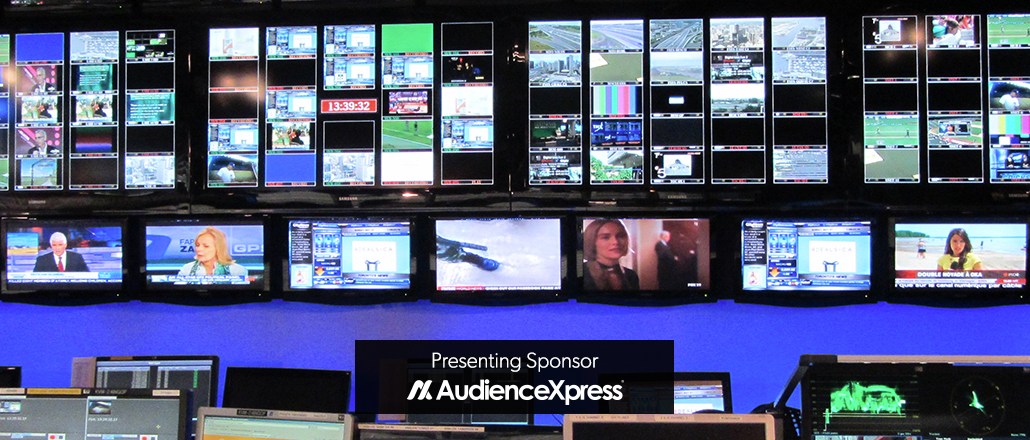‘Programmatic is a process’: Dish exec talks big data and addressable TV

This story is part of a Digiday series on Programmatic TV, which examines how TV advertising is trying to act a little more like its digital cousin by introducing automation.
Although ad tech’s immersion into TV has been slow-going so far, Dish is bringing automation to the industry through its programmatic exchange and addressable products.
Digiday sat down with Adam Gaynor, vp of media sales and analytics at Dish, to discuss the current “crawl phase” that programmatic TV is in and how the company is expanding how it leverages data.
How do you view programmatic TV?
One of the things that has changed is our approach to [understanding] what programmatic TV is. Addressable is a product. It is a product no different than linear is a product, radio is a product and print is a product. Programmatic, on the other hand, is not a product. And so many companies and brands treat programmatic as a product. But very early on, we were able to identify the fact that programmatic is simply a process.
How do you sell your programmatic inventory?
We’re doing it on an impression-by-impression basis. We want brands to be able to transact in the way that they do it in the digital ecosystem.
Where is Dish at with programmatic?
What we’re doing in programmatic TV, I would still equate to the crawl phase. And that’s OK. I don’t think there is anything wrong with crawling, because you have to crawl before you walk. And when I look at what a lot of other platforms and content providers are calling programmatic TV, it really isn’t. It’s data-infused TV with a manual process.
In 2015, Dish opened a programmatic exchange. Has its data capabilities changed since then?
When we first launched, we had three DSP partners. But as we came out of proof of concept and really started to make these improvements, we decided that it would make most sense to be able to transact with lots of DSPs. To that end, we partnered with BidSwitch, which is basically a hub. It allows us to connect to that hub and have access to many more DSPs.
Why did you want more DSPs in your system?
Ultimately it’s about scale. You need as much activity as possible taking place in the system. And so if we limited ourselves to only three DSPs, we’d limit ourselves to those three DSPs’ clients. So in order for the system to work at its maximum capacity, you need lots of brands with lots of different targets transacting. We need to grow our scale, and we’re not going to do it sitting with only three partners.
As of now, cable and satellite providers have access to only two minutes of addressable ad space per hour. Does that lack of supply ever feel constricting?
There are a lot of folks who talk about wanting to get addressability into the national marketplace right now. But at the end of the day, if you look at the inventory, we have the inventory that other operators have; we’re not in a position where demand outpaces the supply. The two minutes an hour across the different operators that can do addressable is enough right now to satisfy the demand.
What do you hope to accomplish with your programmatic exchange?
[Selling TV inventory] is still a process that has to take place between Dish and an agency. So if we can take the same impressions we use for addressable and expose them in a platform where data can be matched automatically for buyers to buy addressable impressions quicker, that is what we see as potentially the future. Once the campaign starts flowing and running, it’d be nice if all that stuff just happens with ones and zeroes. But I’m not trying to revolutionize TV buying. TV buying is a very successful industry, and it has been around for a long time. What I’m trying to do is bring more dollars to addressable TV to help brands pinpoint their targets. And the way I’m going to grow that business is to unite all screens and make it really easy to transact with big datasets.
More in Future of TV

Future of TV Briefing: How agencies are setting up their programmatic teams for the agentic AI era
This week’s Future of TV Briefing recaps two sessions from last week’s Digiday Programmatic Marketing Summit about how agencies’ programmatic buying teams are evolving.

Future of TV Briefing: The streaming ad upfront trends, programmatic priorities revealed in Q3 2025 earnings reports
This week’s Future of TV Briefing looks at what TV and streaming companies’ latest quarterly earnings report indicate about the state of the streaming ad market.

Future of TV Briefing: The creator economy needs a new currency for brand deals
This week’s Future of TV Briefing looks at why paying creators based on reach misses the mark and what IAB is doing to clear up the creator-brand currency situation.





